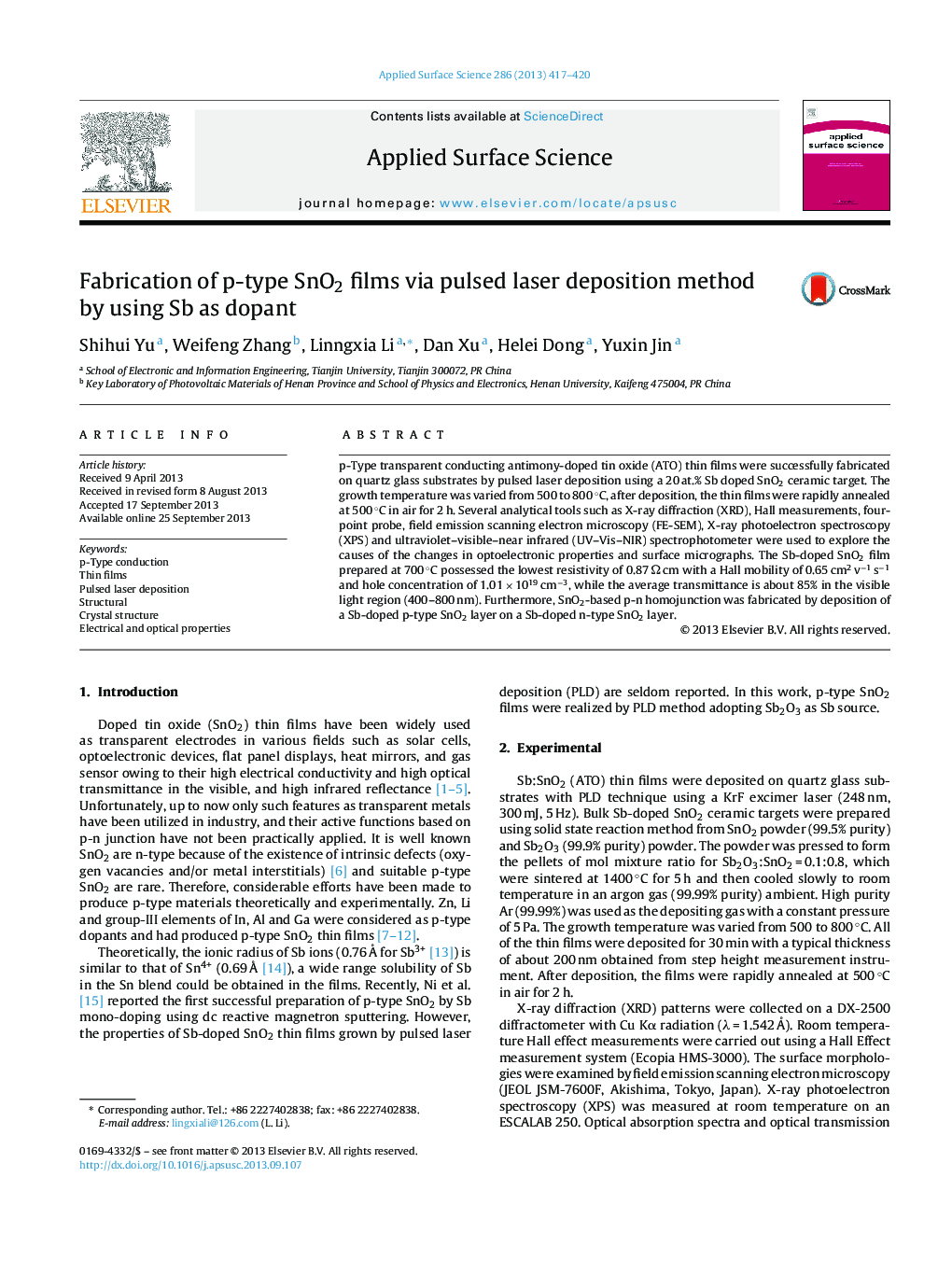| Article ID | Journal | Published Year | Pages | File Type |
|---|---|---|---|---|
| 5352126 | Applied Surface Science | 2013 | 4 Pages |
Abstract
p-Type transparent conducting antimony-doped tin oxide (ATO) thin films were successfully fabricated on quartz glass substrates by pulsed laser deposition using a 20 at.% Sb doped SnO2 ceramic target. The growth temperature was varied from 500 to 800 °C, after deposition, the thin films were rapidly annealed at 500 °C in air for 2 h. Several analytical tools such as X-ray diffraction (XRD), Hall measurements, four-point probe, field emission scanning electron microscopy (FE-SEM), X-ray photoelectron spectroscopy (XPS) and ultraviolet-visible-near infrared (UV-Vis-NIR) spectrophotometer were used to explore the causes of the changes in optoelectronic properties and surface micrographs. The Sb-doped SnO2 film prepared at 700 °C possessed the lowest resistivity of 0.87 Ω cm with a Hall mobility of 0.65 cm2 vâ1 sâ1 and hole concentration of 1.01 Ã 1019 cmâ3, while the average transmittance is about 85% in the visible light region (400-800 nm). Furthermore, SnO2-based p-n homojunction was fabricated by deposition of a Sb-doped p-type SnO2 layer on a Sb-doped n-type SnO2 layer.
Keywords
Related Topics
Physical Sciences and Engineering
Chemistry
Physical and Theoretical Chemistry
Authors
Shihui Yu, Weifeng Zhang, Linngxia Li, Dan Xu, Helei Dong, Yuxin Jin,
